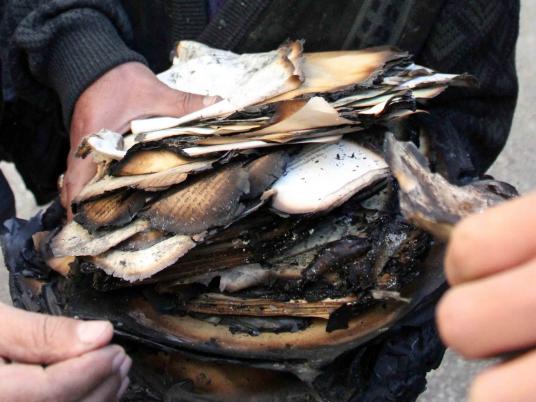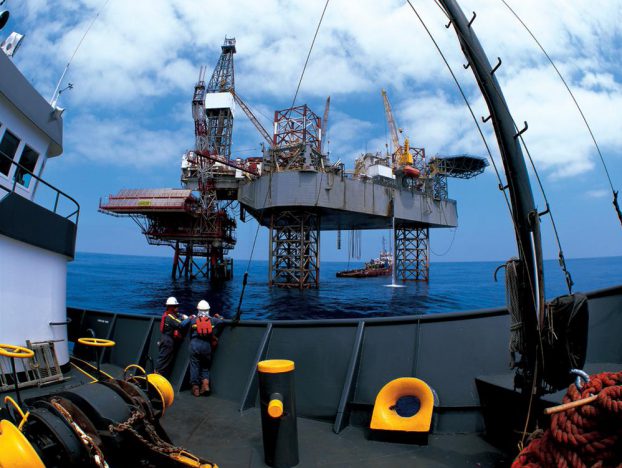
“We won’t pay!” is the name of a campaign launched by the Socialist Popular Alliance on Thursday to persuade citizens not to pay their electricity bills as a gesture of protest against the recurrent power cuts that have plagued the country since the beginning of summer, and particularly during Ramadan.
The party decided to launch its campaign in Imbaba, one of the biggest and most populous neighborhoods in Giza. Party members formed human chains to convince the people to stop paying their bills until electricity is restored. With its more than one million residents, Imbaba was the right choice for the campaign launch. There, power cuts go for at least two hours everyday, according to residents.
This is the third straight summer that Egyptians have suffered power cuts. President Mohamed Morsy responded on Monday by ordering the construction of two new power grids.
According to National Electricity Control Center (NECC) reports, the shortage in electricity generation has reached 4,000 megawatts. While the power grid is supposed to generate 26,500 megawatts, it only produces 22,300 megawatts, which means that 20 percent of the country’s needs of electricity remain unsatisfied.
Electricity and Energy ministry officials, meanwhile, blame the crisis on overconsumption and labor protests, which they say hamper the construction of additional power stations. But there are other undisclosed reasons behind the blackouts, such as the type of fuel used for power generation and the technical condition of power stations.
In Egypt, power consumption has climbed by 12 percent from last year. The average increase in worldwide energy consumption ranges between 7 to 10 percent when economic growth ranges between 5 to 6 percent. World Bank reports project that Egypt’s economic growth rate will reach 3.8 percent this year.
According to statistics from the Electricity Ministry, the ministry’s Egyptian Electricity Holding Company (EEHC) runs five electricity companies with 30 nationwide stations that cover 90 percent of the country’s needs of electricity. The stations run on three types of fuel: natural gas, fuel oil and diesel.
The New and Renewable Energy Authority, also affiliated with the Electricity Ministry, runs the High Dam and Aswan High Dam Reservoir, both of which cover 10 percent of the country’s electricity needs.
Household electricity use accounts for the consumption of 42 percent of the production of electricity, while industry uses 32 percent of the power generated. The remaining 26 percent is used by other public facilities and for street lighting.
Justifying the cuts: Overconsumption
Aktham Abul Ela, official spokesperson for the Electricity Ministry, says failure to conserve energy is the reason why the energy crisis has exacerbated this summer. Over the past two years, over 3 million air conditioning units were installed, he adds. “This is a national crisis and we have no alternative but to conserve energy,” he says.
“The cost of producing one kilowatt-hour is 35 piasters for households, while the government sells the one kilowatt-hour produced at 12.5 piasters on average, which means that the government loses 22.5 piasters for every kilowatt sold to households.”
The Electricity Ministry has planned to produce an additional 2,400 megawatts during this year to cater to the high levels of consumption in the summer. A new 600-megawatt power station in 6th of October City has been in operation since May. Work to complete another two stations, one in Abu Qir, Alexandria and the other in Damietta, is ongoing. The two are supposed to generate a total of 1,800 megawatts.
Officials from the EEHC said the two projects have not been completed due to the protests staged by Abu Qir residents. Residents blocked the streets several times to prevent the delivery of construction materials to the plant, in order to pressure the station to employ local citizens. Residents from Damietta, meanwhile, have been protesting the establishment of the station on their land, asking for hefty compensation.
Less-cited factors: Declining production
Mohamed Rafaat, an electrical engineer at the Cairo Electricity Production Company (CEPC) and spokesperson for the Coalition of Electrical Engineers, says that since 2010, the ministry’s plan to cater for consumption was not sound. The fuel consumed was more than the electricity generated, he says.
Rafaat added that there are three types of power generation units at those stations: thermal units, gas units and mixed units, which are a combination of the former two types. Since 2010, the ministry has built 16 power stations and power generation units, all of which had gas units. These units transform 30 percent of the volume of fuel into electricity, or 200 megawatts for every station. Thermal power stations established in the past transformed 60 percent of fuel volume into generated electricity, or between 700 to 900 megawatts.
According to Rafaat, the ministry has resorted to the cheaper alternative to expand the power grid, disregarding the factor of fuel consumption. The cost of establishing a gas power plant is LE2 billion, compared to LE5 billion for a thermal one, says Rafaat.
Meanwhile, the Electricity Ministry continues to say that the problem is with the Petroleum Ministry’s inability to provide adequate supplies of diesel and fuel oil. Gas oil and diesel are used when natural gas supplies are low.
According to Abul Ela, the slump in foreign reserves in the transitional period from US$38 billion to $15 billion has led countries and donors to refrain from selling Egypt fuel on credit since its credit rating had been downgraded. The decline in the credit rating has overburdened the Petroleum Ministry and it now has difficulty satisfying the Electricity Ministry’s needs.
“The Electricity Ministry is passing the buck to the Petroleum Ministry,” says Raafat.
Sensing a deepening electricity crisis, Egypt has halted natural gas exports to keep the remaining 30 billion cubic meters of natural gas for local consumption. Egypt exports one billion cubic meters of gas — the equivalent of 30 percent of daily production — to European Union countries such as France and Spain as well as to Syria and Lebanon.
Fuel aside, a study conducted by the NECC said that the actual power generation capacity of the five government companies responsible for producing electricity has dropped. For instance, the CEPC’s production has declined to 76 percent of its normal level of production.
Shubra al-Kheima power station, established in 1985 and one of the largest stations of the NECC, suffers daily breakdowns and requires weekly maintenance to continue operating, according to Raafat.
Power plants normally have a lifespan of 25 years, but many of the stations in Egypt have surpassed that age, Raafat adds.
A “To-Do” list
Galal Othman, an energy expert and the head of the Egyptian Wind Energy Association, said there is a need for implementing simultaneous short and long term solutions, particularly since natural gas is a non-renewable energy source.
“The first short term solution is for the government to adopt a new strategy in managing loads that depends on storing energy. Power goes out for an average of two hours a day, and so it is not difficult for the Electricity Ministry to establish a system to store energy before dawn to address the morning or afternoon shortages,” says Othman.
Kamal al-Ganzouri’s cabinet announced the implementation of austerity measures including using fluorescent lighting in the streets and conserving energy. Also, Egypt signed an electricity exchange agreement with Saudi Arabia that has yet to go into effect. Under that agreement, Egypt supplies Saudi Arabia with electricity in the morning while Saudi Arabia supplies Egypt with electricity in the afternoon, such that each country supplies the other with electricity during off-peak consumption hours.
Longer term solutions lie with the subsidies policy. Prime Minister Kamal al-Ganzouri’s cabinet had reduced energy subsidies in the 2012-2013 state budget by LE25 billion to LE70 billion. Subsidies had soared to LE95 billion in the budget in the preceding fiscal year and eventually rose to LE110 billion to meet demand. This involved canceling subsidies for energy-intensive factories, such as cement and ceramic factories.
Othman said that the decision to limit subsidies ensures they go to their target beneficiaries, adding that he believes those companies have the ability to produce their needs of electricity through the establishment of wind stations. This eventually reduces the factories’ share of total electricity produced.
Meanwhile, renewable energy sources, such as solar and wind energy, provide long-term solutions. The Zafarana project, established on the Red Sea coast in cooperation with the German government, should begin work soon and generate 150 megawatts from wind. Another plant is to be established in the Gabal al-Zeit Gulf north of the Red Sea by Italgin. The plant should generate 120 megawatts of energy, also from wind.
According to Raafat, while renewable energy projects have higher fixed costs than power generation plants, renewable energy projects do not need labor, fuel or maintenance and therefore have almost negligible running costs.




